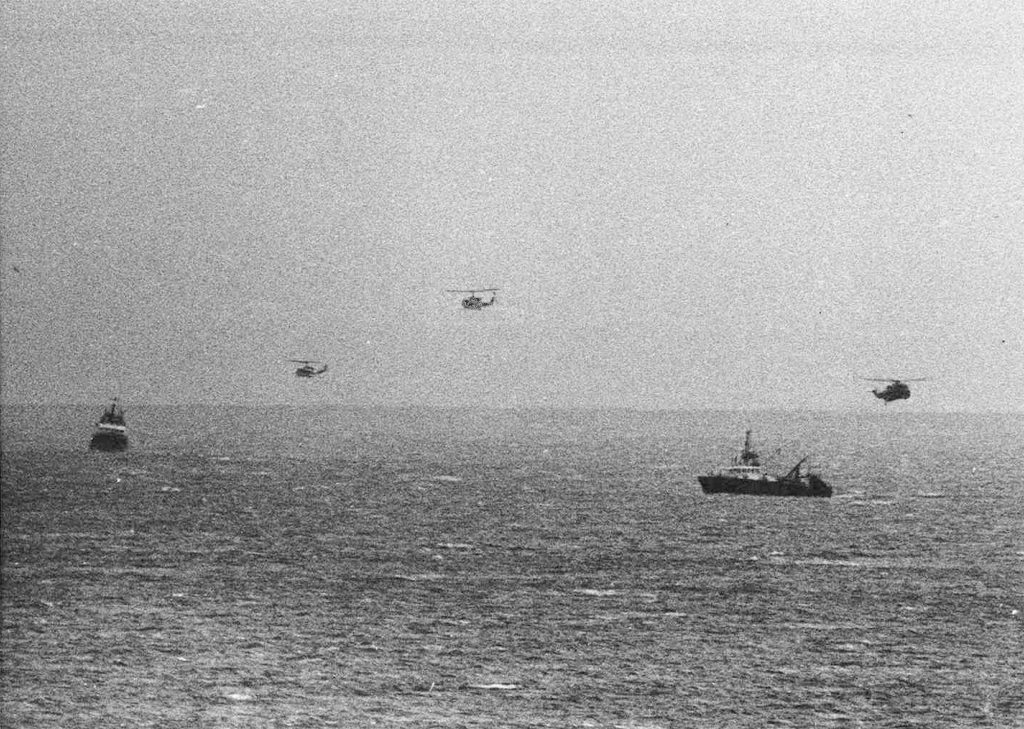
All this week Energy Voice is taking a look back at the events of November 6th in which 45 men lost their lives after a Chinook helicopter crashed on its return to Sumburgh Airport from the Brent Delta platform.
The final moments of the Chinook helicopter flight before it crashed has been remembered by survivor Pushp Vaid.
The pilot was able to give an eye witness account of the incident in the wake of the crash which killed 45 people.
Energy Voice has reproduced his account from the archives.
The pilot of a doomed Chinook today relived the last dramatic moments as his helicopter hurtled towards the icy North Sea.
Captain Pushp Vaid – one of only two survivors of the horror crash last November – described how a normal rig-to-shore flight turned to disaster as the aircraft approached the Sumburgh coast.
Only two minutes from landing there was a loud bang and the helicopter plummeted out of control.
The Chinook’s nose jerked up into the sky and turned completely over before nose-diving into the chilly waters, a fatal accident inquiry was told at Aberdeen Sheriff Court today.
Seconds later Captian Vaid (45) escaped through an emergency door as the craft slowly sank.
Captain Vaid relived his nightmare as the death probe into the crash which claimed 45 lives opened in the city.
The Chinook was heading for Sumburgh with a full load of passenger from the Brent Charlie platform last November when it turned into the world’s worst civilian helicopter accident.
It left the platform with co-pilot Neville Nixon (43) at the controls.
The inquiry heard that the first sign of imminent disaster was noise in the cockpit and the cabin area.
Captian Vaid said: “The co-pilot mentioned it was very noisy in the cockpit. It was getting noisier. To me it was very like a whining noise.”
At his point the Chinook was flying at 250-300ft and was preparing to land at Sumburgh.
Captain Vaid said he heard a loud bang which appeared to come from the gear box area.
Instantly the helicopter reared up and in one dramatic movement, turned full circle and fell out of the sky.
Captain Vaid continued: “I then instinctively caught hold of the collective stick which we use to get it level, but it had no effect at all.
“The next thing I saw was we hit the water with the nose in first.”
The Captain used a scale model of the doomed Chinook to graphically demonstrate the last manoeuvre as it careered out of control.
Captain Vaid described how the cockpit was filled with flying glass – coming from the co-pilot’s side.
He told the inquiry that nothing was said by his co-pilot.
He added: “Once the cockpit hit the water it seemed to slow down. It probably stopped 10 to 15ft below the surface.
”I could see sunlight, I could see the windscreen in front of me. I was not conscious of releasing myself but made my way to the surface.”
Captain Vaid told the inquiry that when he broke the surface he saw two other persons floating on the water.
“They didn’t seem to be making any movement and their faces were in the water,” he said.
After clinging to a piece of wreckage for five minutes he was winched up by a Sikorsky 61 helicopter which arrived on the scene.
The captain said: “I was out of breath, I was gasping for breath and feeling a lot of pain.”
Captain Vaid said at the time he could think of no reason for the tragedy and couldn’t explain the aircraft’s actions.
“I have never had the experience at all. I thought probably the controls had for some reason gone haywire.”
Captain Aid, of Hillside Crescent, Westhill, gave a detailed account of how the Chinook set off on its ill-fated flight.
He said the 110-mile flight from the Brent Charlie to Sumburgh should have taken about an hour.
He added that the crew had carried out the normal checks before leaving and as the helicopter prepared to land had found “nothing untoward”.
Earlier the inquiry was told that the victims died almost instantly when the giant copter hit the sea.
Each of the 45 oilmen killed in the world’s worst civilian helicopter crash died from multiple injuries, post mortems revealed.
None died from drowning, the fatal accident inquiry into the disaster was told.
Police officers revealed at Aberdeen Sheriff court how they compiled a grim catalogue of death.
They described how they placed the bodies retrieved from the sea in a temporary mortuary in Shetland.
Recommended for you
